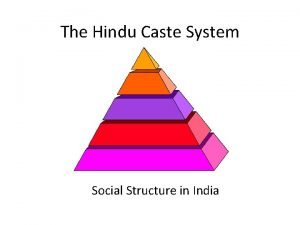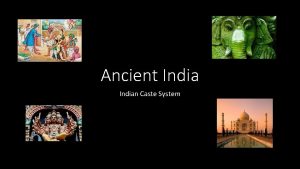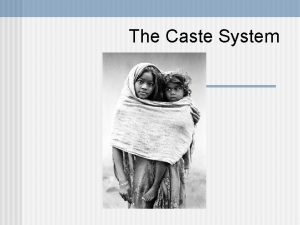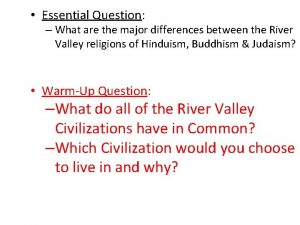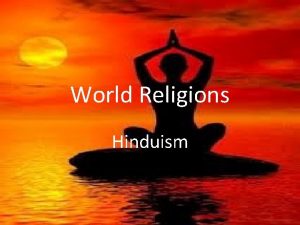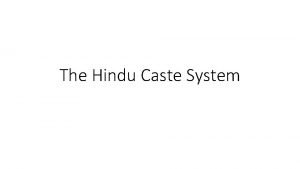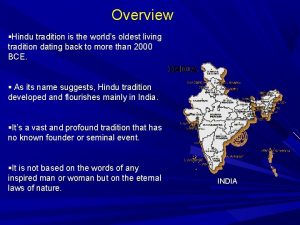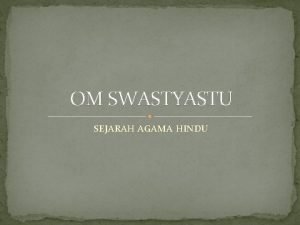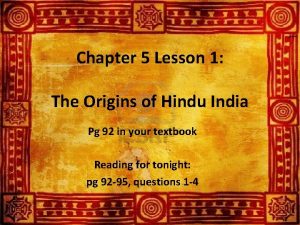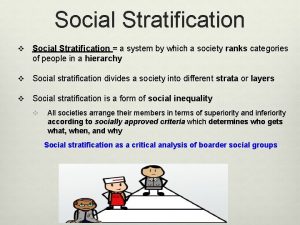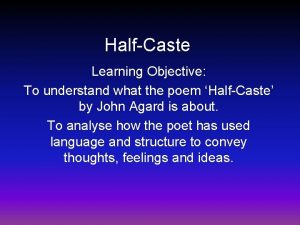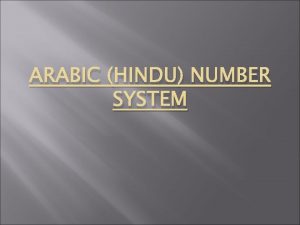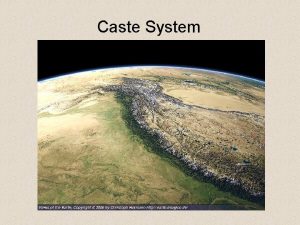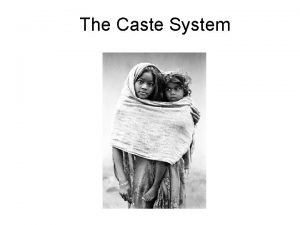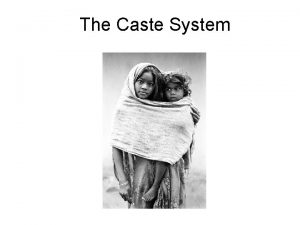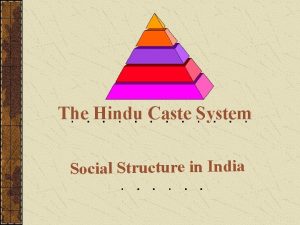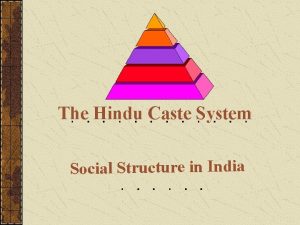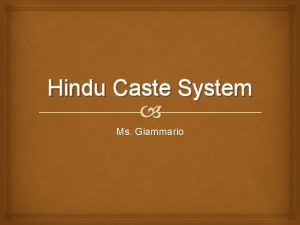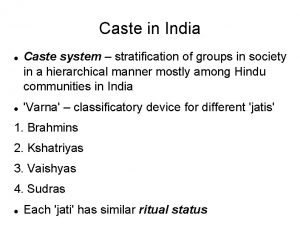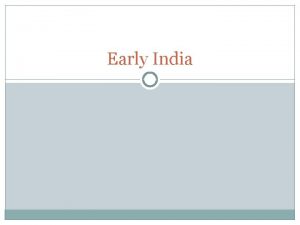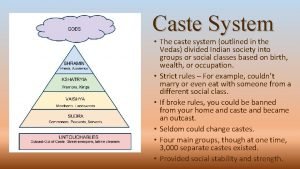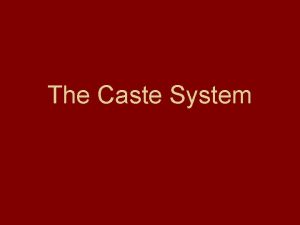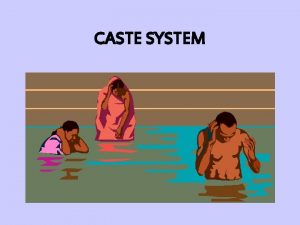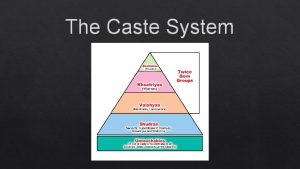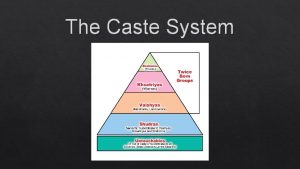The Hindu Caste System Social Structure in India


















- Slides: 18

The Hindu Caste System Social Structure in India


Definition: A type of social organization/hierarchy in which a person’s occupation and position in life is determined by the circumstances of his birth.

Rigid, hereditary membership into birth caste Marriage only among member of same caste Occupation choices restricted Personal contact with other castes restricted Acceptance of fixed place in society

Members of a caste rely on each other for support

Each caste is born out of Brahma (the creator) Brahmins— thinkers/knowers Ksatriya—doers Vaisya—provide food for the belly Sudra—do the work

Each caste has an occupation(s) and contributes to the good of the whole Jajman—gives gift (landlord) Kamin—gives service to the landholder (lower castes)

Landholder gives grain to… Barber Blacksmith Priest Potter Carpenter Today…more of a market system

Reincarnation A person is born, lives, dies, and is reborn again many times. Souls are reborn many times until they are pure enough to be with the creator, Brahma Karma A person’s social position in the next life is determined by his conduct in the present life.

Dharma Code of behavior or set of moral and ethical rules that govern the conduct of each social class. Each group has a different set of rules to live by. Laws of Manu Hindu book of sacred law Rules and restrictions for daily life

Brahmins – Priests, Teachers, Judges; usually don’t own land therefore need other castes to work the land provide for them Kshatriyas – Warriors and Rulers (landowners) Vaisyas – Skilled Traders, Merchants, Farmers

Sudras – Unskilled Workers— Laborers and Craft workers Below these four castes are people who belong to no caste Untouchables – Outcastes, Children of God Concept of pollution…the most pure at the top (Brahmins) and the most polluted at the bottom (Untouchables)

Purpose is to help people of other castes fulfill their dharma Perform rituals and observe vows for the sake of others

Responsible for leadership of the people Often rely on advice from Brahmins

Shopkeepers who sell products (unlike the Shudra who sell services)

Each subgroup of this caste performs a specific service. Jobs include gardeners, potters, and clothes washers

Belong to no caste Expected to do the “dirty” jobs Come in contact with animal skins, dead bodies and human feces Avoid contact with “caste” Indians for fear of “pollution”

Source http: //www. csuchico. edu/~cheinz/syllabi/asst 001/spring 98/16. htm
 Which is the powerful caste in india
Which is the powerful caste in india Caste system
Caste system Ancient india caste system pyramid
Ancient india caste system pyramid 4 castes
4 castes Caste system india
Caste system india Caste system in india for kids
Caste system in india for kids Indian caste system
Indian caste system How is caste determined
How is caste determined Hindu population outside india
Hindu population outside india 4 fase perkembangan agama hindu di india
4 fase perkembangan agama hindu di india Chapter 5 lesson 1 origins of hindu india
Chapter 5 lesson 1 origins of hindu india 4 caste in india
4 caste in india Caste population in india
Caste population in india Caste vs class
Caste vs class Caste system versus class system
Caste system versus class system Objective poem
Objective poem Advantages and disadvantages of roman numerals
Advantages and disadvantages of roman numerals 905 in roman numerals
905 in roman numerals Number system developed by hindu philosopher
Number system developed by hindu philosopher
